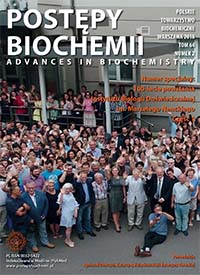The Good, the Bad, and the Ugly â role of the pancreas, endothelium, and adipose tissue axis in the management of pancreatic β-cell failure in obesity-related type 2 diabetes
DOI:
https://doi.org/10.18388/pb.2018_127Abstract
During long-standing obesity and insulin resistance, pancreatic β-cells adapt in order to meet the growing demand of the periphery for insulin. The development of type 2 diabetes requires parallel pathological processes, during which β-cells are continuously exposed to an overabundant supply of specific lipid derivatives. The metabolic events that lead to inevitable β-cell damage are not completely uncovered, and for the time being, our understanding of the dynamic endothelium-adipose tissue-β-cell interactions is limited. Here, we explore various links between continuous obesity, adipose tissue spillover, a dysfunctional endothelium, and defects in islet angioarchitecture to elucidate the crosstalk between signaling systems, cellular mediators, and cell types that contribute to β-cell failure through diverse actions of fatty acids. These molecular and biochemical mechanisms initiate critical rearrangements of the pancreatic vasculature, intraorgan lipid storage capacity, and inflammatory status that subsequently have severe repercussions on β-cell function and promote diabetes.
Downloads
Published
Issue
Section
License
All journal contents are distributed under the Creative Commons Attribution-ShareAlike 4.0 International (CC BY-SA 4.0) license. Everybody may use the content following terms: Attribution — You must give appropriate credit, provide a link to the license, and indicate if changes were made, ShareAlike — If you remix, transform, or build upon the material, you must distribute your contributions under the same license as the original. There are no additional restrictions — You may not apply legal terms or technological measures that legally restrict others from doing anything the license permits.
Copyright for all published papers © stays with the authors.
Copyright for the journal: © Polish Biochemical Society.




